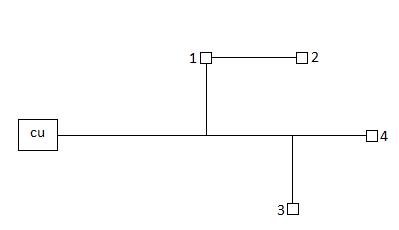As part of my studies, I need some help with a question I have regarding volt drop. I have a copy of Electrician's Guide 17th Edition BS 7671: 2011. I understand everything covered in the volt drop section, but it doesn't appear to mention how volt drop is calculated in a circuit in consideration to spurs. I'm hoping it's not a silly question. I've only had the book a few days and still learning. So I thought it would be easier to put up a diagram.
In the radial circuit shown, the cable running from the consumer unit runs directly to socket 4 whereas all the other sockets are spurs. If i was to calculate volt drop for the load at socket 4, would I have to calculate the length of cables used for the spurs also or don't i need to??
In the radial circuit shown, the cable running from the consumer unit runs directly to socket 4 whereas all the other sockets are spurs. If i was to calculate volt drop for the load at socket 4, would I have to calculate the length of cables used for the spurs also or don't i need to??



